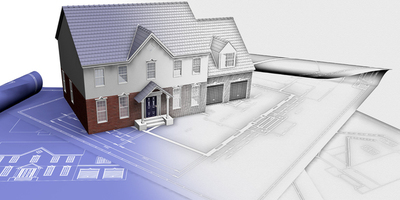Solid Edge, developed by Siemens Digital Industries Software, is a powerful 3D CAD (Computer-Aided Design) software used for product design, simulation, and manufacturing. It combines parametric, direct, and synchronous modeling approaches, making it flexible for both beginners and advanced users.
Solid Edge is widely used in industries such as automotive, industrial machinery, aerospace, consumer products, and medical devices, providing engineers with tools to design parts, assemblies, sheet metal, and surfaces efficiently. Its integration with simulation, manufacturing, and product lifecycle management (PLM) solutions makes it a complete platform for end-to-end product development.s
Industry-recognized CAD tool for mechanical and product design.
Combines flexibility and speed with professional-grade modeling capabilities.
Supports a wide range of engineering applications, making learners industry-ready.
Provides a foundation for advanced CAD, simulation, and manufacturing skills.
Synchronous Technology – Combines the speed of direct modeling with the control of parametric design.
3D Part & Assembly Design – Build complex parts and multi-component assemblies efficiently
Sheet Metal & Weldments – Tools for fabrication-ready components.
Surface & Freeform Modeling – Create aesthetic and ergonomic product surfaces.
Simulation & Analysis – Stress, motion, and thermal studies for validating designs.
Manufacturing Integration – CAM, CNC machining, and additive manufacturing support.
Collaboration & PLM Ready – Integrates with Teamcenter for managing design data and workflows.
Design of mechanical components, assemblies, and vehicle parts.
Simulation of motion, stress, and thermal effects for vehicle systems.
Design of machinery, tools, jigs, and fixtures.
Sheet metal and weldment design for manufacturing workflows.
Ergonomic modeling for gadgets, appliances, and industrial products.
Surface modeling for aesthetics and product refinement.
Precision modeling of medical instruments, prosthetics, and devices.
Validation using simulation tools for safety and reliability.
CAM integration for CNC machining and production-ready designs.
Support for 3D printing and rapid prototyping.
Generative design and topology optimization for lightweight structures.
Integration with PLM systems for collaborative product development.
By the end of this course, learners will be able to:
Create and fully define 2D sketches with constraints and smart dimensions.
Develop 3D parts and features using extrude, revolve, sweep, loft, fillet, and chamfer.
Apply surface modeling tools to create complex freeform geometries.
Design sheet metal components with bends, flanges, and flat patterns.
Assemble multiple components with mates, detect interferences, and perform motion analysis.
Generate 2D drawings with dimensions, GD&T, annotations, and BOM.
Perform basic simulation such as stress, motion, and thermal analysis to validate designs.
Prepare models for manufacturing and 3D printing.
Manage assemblies and design revisions efficiently.
Apply industry-standard CAD practices to real-world engineering problems.

Component Based Training
Industry Based Training
International Certifications
100% Placement Assistance
Free Certified Workshops & Seminars
Syllabus Based Classes

Component Based Training
Industry Based Training
International Certifications
100% Placement Assistance
Free Certified Workshops & Seminars
Syllabus Based Classes

Component Based Training
Industry Based Training
International Certifications
100% Placement Assistance
Free Certified Workshops & Seminars
Syllabus Based Classes

Component Based Training
Industry Based Training
International Certifications
100% Placement Assistance
Free Certified Workshops & Seminars
Syllabus Based Classes

Component Based Training
Industry Based Training
International Certifications
100% Placement Assistance
Free Certified Workshops & Seminars
Syllabus Based Classes
No: #172, Raahat Plaza,
2nd Floor, Office No: 196 & 197,
Arcot Road, Vadapalani,
Chennai - 600026.
caddschool@gmail.com
© CADD SCHOOL. All Rights Reserved. CADD SCHOOL